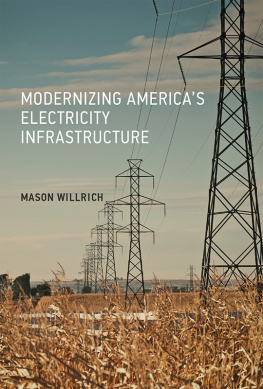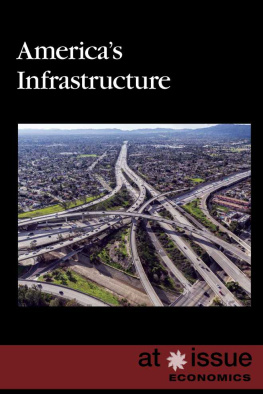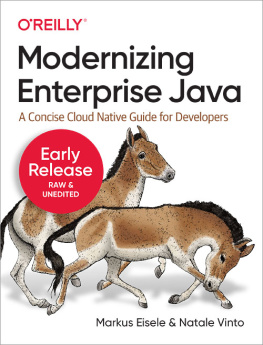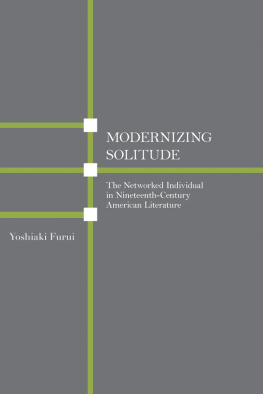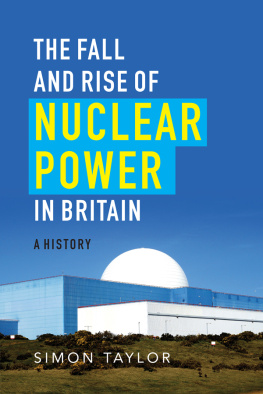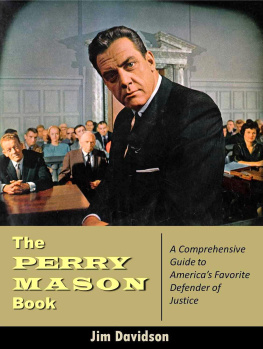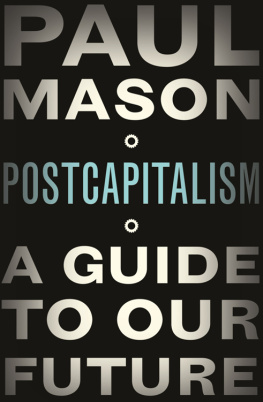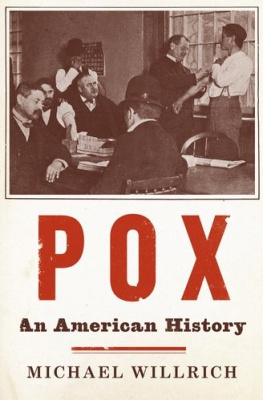Mason Willrich - Modernizing Americas Electricity Infrastructure
Here you can read online Mason Willrich - Modernizing Americas Electricity Infrastructure full text of the book (entire story) in english for free. Download pdf and epub, get meaning, cover and reviews about this ebook. year: 2017, publisher: MIT Press, genre: Politics. Description of the work, (preface) as well as reviews are available. Best literature library LitArk.com created for fans of good reading and offers a wide selection of genres:
Romance novel
Science fiction
Adventure
Detective
Science
History
Home and family
Prose
Art
Politics
Computer
Non-fiction
Religion
Business
Children
Humor
Choose a favorite category and find really read worthwhile books. Enjoy immersion in the world of imagination, feel the emotions of the characters or learn something new for yourself, make an fascinating discovery.
- Book:Modernizing Americas Electricity Infrastructure
- Author:
- Publisher:MIT Press
- Genre:
- Year:2017
- Rating:3 / 5
- Favourites:Add to favourites
- Your mark:
- 60
- 1
- 2
- 3
- 4
- 5
Modernizing Americas Electricity Infrastructure: summary, description and annotation
We offer to read an annotation, description, summary or preface (depends on what the author of the book "Modernizing Americas Electricity Infrastructure" wrote himself). If you haven't found the necessary information about the book — write in the comments, we will try to find it.
Modernizing Americas Electricity Infrastructure — read online for free the complete book (whole text) full work
Below is the text of the book, divided by pages. System saving the place of the last page read, allows you to conveniently read the book "Modernizing Americas Electricity Infrastructure" online for free, without having to search again every time where you left off. Put a bookmark, and you can go to the page where you finished reading at any time.
Font size:
Interval:
Bookmark:

Mason Willrich
The MIT Press
Cambridge, Massachusetts
London, England
2017 Massachusetts Institute of Technology
All rights reserved. No part of this book may be reproduced in any form by any electronic or mechanical means (including photocopying, recording, or information storage and retrieval) without permission in writing from the publisher.
This book was set in ITC Stone Sans Std and ITC Stone Serif Std by Lumina Datamatics. Printed and bound in the United States of America.
Library of Congress Cataloging-in-Publication Data
Names: Willrich, Mason, author.
Title: Modernizing Americas electricity infrastructure / Mason Willrich.
Description: Cambridge, MA : MIT Press, [2017] | Includes bibliographical references and index.
Identifiers: LCCN 2017002625 | ISBN 9780262036795 (hardcover : alk. paper)
Subjects: LCSH: Electric power--Government policy--United States. | Electric power transmission--Government policy--United States. | Electric power distribution-
Government policy--United States.
Classification: LCC HD9502.U52 W57 2017 | DDC 333.793/20973--dc23 LC record available at https://lccn.loc.gov/2017002625
10 9 8 7 6 5 4 3 2 1
d_r0
For Wendy, with love forever and gratitude for her steadfast support.
Like my previous books, this one has its own story. I am sharing that story with you, reader, so you may appreciate my qualifications and limitations as an author of a book about a vast, contentious, and important subjectAmericas electricity infrastructure. My intention has been to write a book that is interesting and informative for people who are concerned about energy, the environment, and security.
This books story begins with a chance encounter I had around the edges of a workshop on renewable energy at Stanford University in the fall of 2014. I engaged in conversation with Matt Baker, an environment program officer at the William and Flora Hewlett Foundation. Although we had not met before, we immediately found a topic of intense mutual interestthe development of the rich wind and solar resources in the western United States. Shortly thereafter, I asked Ryan Wiser, a guru of renewable energy at the Lawrence Berkeley National Laboratory, Whats missing from the reams of ongoing policy research surrounding innovation within the United States electric power industry? Ryan replied, No one is connecting the dots. Next came several conversations with Matt, which led to an engagement in February 2015 to write a paper for the Hewlett Foundation.
My paper would embrace Americas entire electricity infrastructure, end to end, and aim to connect the dots across the boundaries of academic disciplines, silos of government bureaucracies, and political jurisdictions. I recognized the wide scope of such an undertaking, but I accepted the challenge. I believed there was a public need for such a paper. After all, when I was a law professor at the University of Virginia, I authored a book in 1975 that was favorably reviewed and widely read: Energy and World Politics. My long monograph for the Hewlett Foundation was finished in January 2016. The Foundation used it well for its philanthropic purposes and encouraged me to seek a publisher.
My first choice was the MIT Press because of my subject matter, my high regard for other works published by the press, and my many collaborations over decades with Richard K. LesterMITs associate provost for international activities, former head of the Department of Nuclear Science and Engineering, and founding director of MITs Industrial Performance Center. Modernizing Americas Electricity Infrastructure significantly expands and updates my 2016 monograph for the Hewlett Foundation. But its roots lie in my work as senior advisor of MITs Energy Innovation Project, a three-year research project directed by Richard and based at MITs Industrial Performance Center.
After leaving academia in 1979, I played a variety of roles in the electric industry. In 1979, I joined Pacific Gas and Electric Company as vice president of strategic planning. From 1979 to 1994, I served in a number of executive positions at PG&E including executive vice president at the utility and CEO of PG&E Enterprises, the utilitys subsidiary for unregulated businesses. While leading PG&E Enterprises, I co-founded U.S. Gen, a partnership with Bechtel Enterprises that grew into a large, independent power company. In 1996, I became a partner of Nth Power, a pioneer venture capital firm in the clean-energy space. During this period, I also served on the advisory councils of the National Renewable Energy Laboratory and the Electric Power Research Institute. In 2005, Californias governor, Arnold Schwarzenegger, appointed me to be a member of the Board of the California Independent System Operator, and from 2006 to 2011, I was chairman of the board.
In conducting my research and writing this book, I have drawn upon my own diverse experiences, and I have consulted professional friends and colleagues in business, government, academia, and nonprofit organizations. Of course, I alone am responsible for my books contents.
In this Preface, I owe all readers a sweeping apology: The text of this book is populated with acronymslike IOU, POU, and PUC, not to mention FERC. Much earlier in life, as a pilot in the SAC (Strategic Air Command) and thereafter in the Kennedy administration serving on United States delegations to nuclear armscontrol negotiations with the USSR (Union of Soviet Socialist Republics) I nearly drowned before learning to swim in a world of acronym-speaklike ICBM, SLBM, and MIRV, not to mention ABM. Unfortunately, the subject matter of this book contains a plethora of multiworded terms that occur multiple times. If you will consult two, or perhaps three times, the alphabetical list of acronyms, I am quite sure you will feel use of the acronym in question is more convenient than a term repeatedly written out across a third of a line.
At the end of this book, I propose a national strategy for modernizing Americas electricity infrastructure. My proposed strategy is embedded in a comprehensive framework I have devised to guide policy analysis. The substance of the strategy requires choices of outcomes that are always debatable and often contentious. The choices I make are judgments informed by research and experience. I doubt that any reader will agree with all of them, but I hope that only a few will disagree with them all. My fondest hope is that my comprehensive framework will have enduring value as a way of thinking through the web of issues that we face together about the future of Americas electricity infrastructure.
Mason Willrich
Piedmont, California
March 2017
I am grateful to the William and Flora Hewlett Foundation for the support of my research and writing of the monograph that preceded my work on this book: Modernizing Americas Electricity Infrastructure. I wish to thank especially Matt Baker, environment program director, for his interest, encouragement, and patience throughout my work sponsored by the Hewlett Foundation.
I am truly thankful to the following people for their time reviewing and commenting on an early draft of my Hewlett monograph or on the finished product: Matthew Barmack, Jacopo Buongiorno, John Busterud, Ralph Cavanagh, Philip Chase, Daniel Cullenward, Jordan Diamond, Kevin Dasso, Michael Eckhart, Ethan Elkind, Joseph Eto, Charles Finnie, Charles Forsberg, Peter Fox-Penner, James Gibbons, William Hogan, Daniel Kammen, Raymond Kopp, Lorenzo Kristov, Thomas Kuhn, Charles Lord, Amory Lovins, Arun Majumdar, Gilbert Masters, Carl Pechman, Per Peterson, Jackalyne Pfannenstiel, Michael Picker, David Roe, Richard Sedano, George Stathakis, Andrew Van Horn, David Victor, Ray Williams, Ryan Wiser, and John Woolard.
Next pageFont size:
Interval:
Bookmark:
Similar books «Modernizing Americas Electricity Infrastructure»
Look at similar books to Modernizing Americas Electricity Infrastructure. We have selected literature similar in name and meaning in the hope of providing readers with more options to find new, interesting, not yet read works.
Discussion, reviews of the book Modernizing Americas Electricity Infrastructure and just readers' own opinions. Leave your comments, write what you think about the work, its meaning or the main characters. Specify what exactly you liked and what you didn't like, and why you think so.

